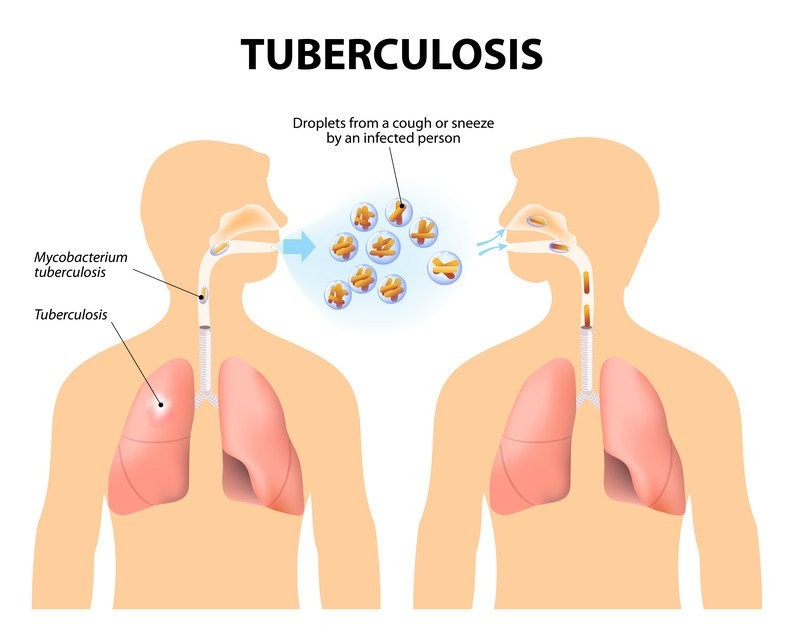
Contents
What Does Tuberculosis Do to the Body?
Tuberculosis is an infectious disease that primarily affects the respiratory system and includes symptoms of sickness or weakness, fever, and more.
Tuberculosis (TB) is one of the top 10 causes of death worldwide. TB infects the respiratory system and can also affect other systems such as gastrointestinal, musculoskeletal, nervous, and others.
The most common type of TB is pulmonary TB, which affects the lungs.
Symptoms of pulmonary TB include:
– Coughing for more than two weeks with or without fever
– Fever, especially in the evening
– Blood in the sputum
– Chest pain
– Loss of appetite
– Weight loss
– Chronic fatigue
– Night sweats and chills
TB can occasionally affect other organs, such as the bones, stomach, and brain, causing common symptoms like fever, weight loss, and appetite loss, as well as specific symptoms related to the affected organ system:
– Back pain and neurological complications from bone TB involving the spine
– Nausea, vomiting, diarrhea, and malabsorption from gastrointestinal TB
– Blood in the urine from kidney involvement
– Seizures, headaches, and other neurological abnormalities from brain involvement
TB bacteria settle in the lungs when inhaled. People with strong immune systems can prevent the bacteria from multiplying by containing the bacterial colony in a membrane. However, if the immunity weakens, the membrane can burst, leaving scarring in the lungs. Bacteria can also enter the bloodstream, infecting other organs.
5 Types of Tuberculosis
Tuberculosis is classified into five types based on the type of infection:
1. Latent TB: The infection is asymptomatic as the body’s immune system keeps it in check. However, the latent infection can reactivate when the immune defenses weaken, leading to active disease.
2. Active TB: The bacteria are active and cause symptoms. There are two types: pulmonary TB (primarily affecting the lungs) and systemic TB (affecting other parts of the body).
3. Disseminated TB or miliary TB: A rare form of TB where the bacteria enter the bloodstream and spread throughout the body, affecting multiple organs.
4. Multidrug-resistant TB (MDR TB): Caused by bacteria resistant to at least two commonly used anti-TB drugs.
5. Extensively drug-resistant TB (XDR TB): A rare form of TB where the bacteria are resistant to more than two anti-TB drugs.
TB can cause serious complications in individuals with human immunodeficiency virus and compromised immunity. If left untreated, TB can lead to miliary TB, fluid buildup in the lungs, paralysis, arthritis, infertility, seizures, and MDR or XDR TB.
Causes of Tuberculosis
Tuberculosis (TB) is caused by the bacterium Mycobacterium tuberculosis. It spreads through coughing or sneezing, with others inhaling the TB bacteria-containing droplets. Extended contact is required to get infected, and not everyone with TB is contagious.
The risk of TB is higher in people who:
– Live in or come from TB-infested areas
– Are in close contact with an infected person
– Live in crowded environments
– Have an immunosuppressing condition or weakened immune system
– Have undergone chemotherapy, biological agent treatments, or have poor health due to lifestyle issues
Treatment Options for Tuberculosis
To confirm a suspected case of TB, doctors order laboratory tests and imaging studies, along with a detailed history and examination. Treatment options depend on the type and severity of TB infection.
For active TB, combination therapy is required, usually involving medications like isoniazid, rifampin, pyrazinamide, and ethambutol.
Treatment for latent TB usually involves antibiotics taken for six to nine months. Medications for TB need to be taken for several months to effectively kill or inhibit bacterial growth. Treatment must be continued even if symptoms improve to prevent drug resistance.
MDR and XDR TB treatment options include higher doses of first-line drugs and a combination of oral medications and injections. MDR treatment typically lasts 18 months, while XDR treatment lasts 24 months.
Supportive care for TB includes medications to alleviate symptoms and nutritional support. Vaccines like Bacillus Calmette–Guerin can prevent TB in countries where the disease is prevalent.
To reduce the risk of TB, practice good hygiene, maintain distance from infected individuals, and follow treatment regimens. Proper treatment of TB is crucial, as untreated TB can lead to serious complications and a higher risk of death within five years.


